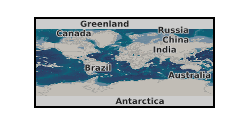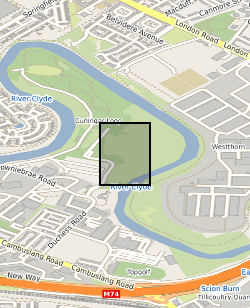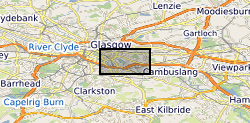2021
Type of resources
Topics
Keywords
Contact for the resource
Provided by
Years
Formats
Representation types
Update frequencies
-

Apatite Fission Track (AFT) single grain count and horizontal confined track length data acquired from 6 sandstones samples from UKGEOS Glasgow borehole GGC01 drilled in the Dalmarnock area of Glasgow. The sandstones were retrieved from depths of 65, 98, 135, 150, 168 and 198 metres and were Westphalian in age coming from the Middle and Lower Scottish coal measures. Each sample has its BGS Subsample SSK number and an ascribed name in reference to its depth of collection with the added initials of the researcher i.e., 65 AH. The data is presented in 2 files one containing the AFT count data and the other containing the AFT length measurements. The AFT count data of each sample is found in excel file containing the spontaneous and induced track counts of a grain and accessory data of that grain e.g., the calculated age (calculated using the program Isoplotr) and calculated uranium concentration. The AFT length data of each sample comes in a separate excel file with the measured lengths and c-axis corrected lengths of HCTs of a sample, all Dpar measurements are also listed here. Samples and data are derived from the UK Geoenergy Observatories Programme funded by the UKRI Natural Environment Research Council and delivered by the British Geological Survey.
-

Data set is of drill fluid return, settling tank, and bore hole flush fluids sampled during the development of GGC01 seismic monitoring borehole and GGA07 and GGA08 mine water geothermal wells at the UKGEOS - Glasgow site.
-

The UK Geoenergy Observatories (UKGEOS) Glasgow superficial deposits GSI3D model outputs, created by the British Geological Survey, provide a semi-regional overview of the depth, thickness and extent of glacial and post-glacial lithostratigraphic units above rockhead. The model allows users to visualise the likely subsurface sequence to be found beneath this part of Glasgow, applicable at a scale of around 1: 25,000 to 1: 10,000. The data is supplied as grids and shapefiles over a 7 by 4.15 km area, with the depth range to around 40 m below Ordnance Datum. This model describes an interpretation of the shallow geology updated to incorporate the results of drilling the 12 UKGEOS Glasgow boreholes (post-drill model). Further details and model limitations can be found in the accompanying metadata report http://nora.nerc.ac.uk/id/eprint/531155/ . DOI: https://doi.org/10.5285/915f690f-32cf-41b7-984e-c32344d3a543
-

The borehole information pack from borehole GGC01, site 10 of the UK Geoenergy Observatories (UKGEOS) Glasgow facility. This final data release pack from BGS contains geophysical (MSCL-S), Near Infrared (NIR) and X-ray Fluorescence (XRF; mineralogical and chemical) core scan and core-wireline depth integration data, in addition to sedimentology, discontinuity and engineering logs, core scan optical and X-ray images, composite and digital wireline logs, drillers' summary logs and prognosis, sample recovery information spreadsheets and daily drillers' borehole records that were contained within the now-superseded intermediate data release. The cored, seismic monitoring borehole was drilled between 19 November and 12 December 2018 to 199m producing a core of 102 mm diameter. The borehole was wireline logged in December 2018 and a string of 5 seismometers were installed in February 2019. A range of fluid, water and core samples were taken during the drilling process. The borehole information pack- final release contains a range of logs on the core as well as images and scans of that core, these data were acquired in the first half of 2019 and late 2020/early 2021. The final data release for GGC01 includes: 1. UKGEOSGlasgow_GGC01_Final.zip file that includes the majority of the various data files, including files from the intermediate and initial data packs. 2. UKGEOSGlasgowGGC01_slabbedhighresimages.zip that contains the slabbed core optical images, 51GB in size. 3. Intermediate Borehole Information Pack - Part Two, high resolution whole core optical and radiographic images https://doi.org/10.5285/0b49f25b-a5d6-401c-98ff-397ad9ee9ed1 71GB in size, already released. Further details and model limitations can be found in the accompanying report http://nora.nerc.ac.uk/id/eprint/530762
-

The data release includes groundwater chemistry data from 8 samples and 2 tap water samples collected during the borehole construction phase at the UK Geoenergy Observatories (UKGEOS) Glasgow facility. This release from the British Geological Survey (BGS) covers water samples collected between December 2018 and December 2019 and then analysed for the concentrations of selected parameters at BGS and other laboratories. It contains a report and a data sheet. Further details can be found in the accompanying report http://nora.nerc.ac.uk/id/eprint/530443
-

IDA267644 Methane and CO2 gas concentrations and stable isotope analyses of select core samples from GGC01 borehole of the Glasgow UKGEOS facility. Core samples were collected approximately every 10m depth in gas tight isojars by the BGS. Geochemical gas analyses was carried out at the Scottish Universities Environmental Research Centre (SUERC) and consisted of bulk concentration analysis using gas chromatography; followed by δ13CCH4, δ13CCO2, and δD stable isotope analyses on a methane combustion line (full methods attached). This data was collected to investigate the variability of gas fingerprints with depth within the Glasgow coal mine workings, and unmined Carboniferous coal measures. Samples and data are derived from the UK Geoenergy Observatories Programme funded by the UKRI Natural Environment Research Council and delivered by the British Geological Survey.
-

Loan IDA number - IDA271576. No data was obtained for microbial cultivation experiments with core samples SSK111460 and SSK111461 from UKGEOS Glasgow Observatory, borehole GGC01. Samples and data are derived from the UK Geoenergy Observatories Programme funded by the UKRI Natural Environment Research Council and delivered by the British Geological Survey. Attached document described methodology of enriching sandstone core (SSK111461) in different media types and shale core (SSK111460) in synthetic groundwater. No microbial growth was seen after 7 months.
-

The data release includes initial interpretation from test pumping of boreholes at the UK Geoenergy Observatories (UKGEOS) Glasgow facility. This release from the British Geological Survey (BGS) covers a programme of test pumping carried out in ten boreholes in January and February 2020. It contains contractors reports and data sheets, BGS data sheets of data logger and manual dip data in the pumped borehole and in the observation boreholes. Step tests and five hour constant rate tests were performed in nine of the boreholes and a slug (falling/rising/head) test was performed in one borehole. Further details can be found in the accompanying report http://nora.nerc.ac.uk/id/eprint/530507
-

These images were acquired using micro computed tomographic imaging of 4 sandstone plugs taken at various depths in the Glasgow UKGEOS borehole GGC01. GG496 (170.07 m), GG497 (168.66 m), GG498 (73.37 m) and GG499 (135.06 m). These samples are further detailed and analysed in the following article: http://dx.doi.org/10.1144/petgeo2020-092.
-

The UK Geoenergy Observatories (UKGEOS) Glasgow 3D coal mine model outputs, created by the British Geological Survey, provide a semi-regional overview of the depth and extent of surveyed and probable coal mine workings, plus stone and coal roads surveyed within the mines. The model allows users to visualise the surveyed and probable coal mine workings to be found beneath this part of Glasgow, applicable at a scale of around 1: 25,000 to 1: 10,000. The data is supplied as grids, triangulated surfaces over a 5 by 4.15 km area, with the depth range to around 300 m below Ordnance Datum. The mine extents are ‘cut out’ of the UKGEOS Glasgow post-drill bedrock model. This model describes both surveyed (recorded on mine abandonment plan) and probable coal mine workings. An area of probable workings has been updated to account for the results of drilling borehole GGC01. Further details and model limitations can be found in the accompanying metadata report http://nora.nerc.ac.uk/id/eprint/531157/
 UKGEOS Data Catalogue
UKGEOS Data Catalogue